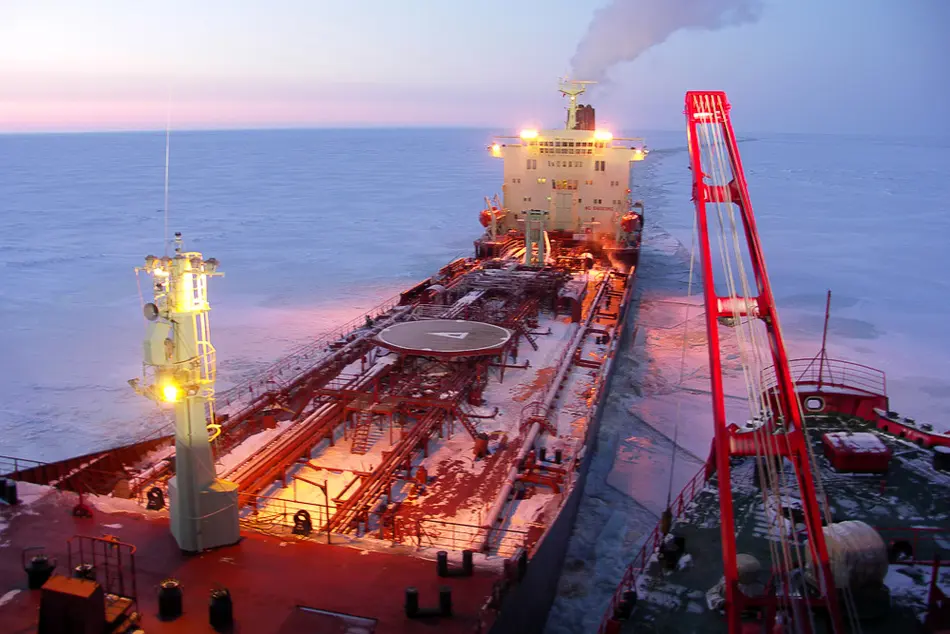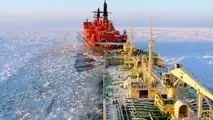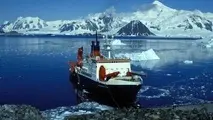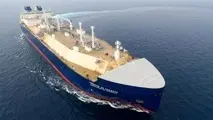Russia Uses Northern Sea Route For LNG Shipments From EU to Asia

Russian supertanker Christophe de Margerie is on its way to South Korea via the Northern Sea Route with a load of liquefied natural gas from Norway. In an interview with Sputnik, Danila Bochkarev, a senior fellow at the EastWest Institute in Brussels, said that Russia was now pitching itself as an important transporter of European gas to Asia.
“This shipment is a serious step for Russia’s Sovcomflot to enter the global gas transportation market. Sovcomflot has 128 tankers and 13 LNG transport ships. This is about four percent of the global gas transporting fleet, but Russia’s share of this market keeps going up,” Bochkarev said.
The Christophe de Margerie does not need icebreakers to sail along the Northern Sea Route as it is able to cut through two meters of pack ice.
Russian companies want to be more than just LNG transporters and Gazprom is going to build an LNG plant on Sakhalin Island and an additional one on the Baltic Sea.
“The Northern Sea Route cuts the travel time from Europe to Asia by a hefty 40 percent and the Christophe de Margerie will cover this distance in just 15 days. Yamal LNG will start sending liquefied gas via the Northern Sea Route before this year is out, and by 2019 it is set to become the biggest liquefied natural gas producer in the world,” Danila Bochkarev continued.
He added that the creation of LNG producing and transporting facilities will become a useful addition to Gazprom’s plans to build Nord Stream 2 and other gas pipelines.
“LNG is cheaper to supply to South Korea and other countries with no pipeline links to gas producers. Moreover, the average gas prices in Asia are higher, which explains why most of the globally-produced LNG is going to Southeast Asia,” Bochkarev noted.
Russian tanker companies are all set to continue their mutually-beneficial cooperation with EU countries.
Norway’s Statoil is currently working with Russian oil and gas companies in the Barents and Okhotsk Seas and also in the Russian North.
Simultaneously, Russia’s Rosneft is now able to join in a raft of Norwegian oil and gas project in the Northern Sea and the Norwegian sector of the Barents Sea, Deutsche Wirtschafts Nachrichten wrote.
Whether Statoil will keep working with Russian companies now that US President Trump has approved a new round of sanctions against Russia, remains a big question, the DWN added.
“The sanctions do not cover the gas shipments per se, but they could complicate the privatization of Sovcomflot and make it less attractive to potential investors,” Danila Bochkarev said.
Meanwhile, Poland wants to sign a long-term deal for LNG supplies from the US to become less reliant on Russian gas imports, the country’s president Andrzej Duda said after meeting US president Donald Trump in July.
Poland imports most of the 16 billion cubic meters of gas it consumes per year from Russia and plans to replace Russian gas with supplies from Norway via a planned pipeline as well as with more LNG from the United States.
Poland received its first LNG shipment from the US in June and is now in talks over more deliveries.
In an interview with Sputnik, Polish Foreign Minister Witold Waszczykowski said, however, that a decision regarding LNG imports from the United States had not been taken yet, and the LNG price should be competitive to the gas prices from other countries, such as Qatar and Russia.



